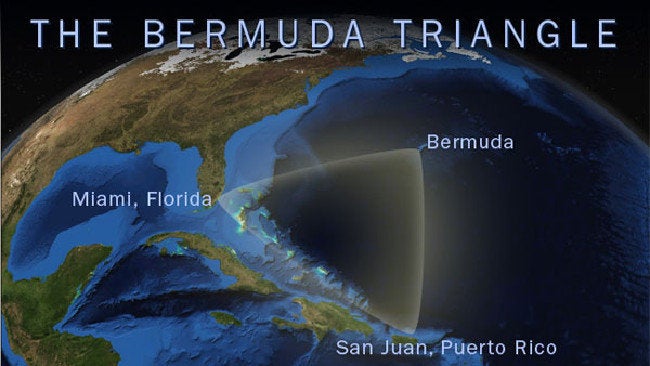Giant craters discovered on the seabed around the coast of Norway could place scientists a step closer to solving the mystery of the Bermuda Triangle.
The craters are believed to have been caused by bubbles of gas leaking from deposits of oil and gas buried deeper in the sea floor, and measure up to half-a-mile wide and 150ft deep.
Experts are due to analyse whether the bubbles could potentially place ships in danger next month at the annual meeting of the European Geosciences Union – a theory which could well explain the disappearance of vessels in the Bermuda Triangle.

Researchers from the Arctic University of Norway told The Sunday Times: “Multiple giant craters exist on the sea floor in an area in the west-central Barents Sea… and are probably a cause of enormous blowouts of gas.
“The crater area is likely to represent one of the largest hotspots for shallow marine methane release in the Arctic.”
The legend of the Bermuda Triangle – a cut of ocean stretching from Miami to Bermuda to Puerto Rico – began in 1945 when five aircraft disappeared on a training mission in the region. Since then, a number of other disappearances on land, sea and air all related to the same area have been recorded, with many conspiracy theorists surmising the presence of supernatural activity as an explanation.
The gas bubbles theory is not a new one. The National Oceanic and Atmospheric Administration writes incidents of “ocean flatulence” in the Bermuda Triangle are more grounded in science, if not evidence, also citing “disruptions in geomagnetic lines of flux.”
It also points out that the US Board of Geographic Names does not recognise the Bermuda Triangle as an official name and does not maintain an official file on the area.
Similarly, News.com.au quotes Igor Yelstov, from the Trofimuk Institute of Petroleum Gas Geology and Geophysics, as explaining last year: “There is a version that the Bermuda Triangle is a consequence of gas hydrates reactions.
“They start to actively decompose with methane ice turning into gas. It happens in an avalanche-like way, like a nuclear reaction, producing huge amounts of gas.
“That makes the ocean heat up and ships sink in its waters mixed with a huge proportion of gas.”
UPDATE: Professor Karin Andreassen at the Centre for Arctic Gas Hyrdrate, Environment and Climate at the Arctic University of Norway has since released the following statement: "Analyses suggest that blowout of methane gas once the ice retreated after the last Ice Age formed these craters. We have yet to publish these results, so these are preliminary. What I can say is that we are not making any links to the Bermuda Triangle.”
